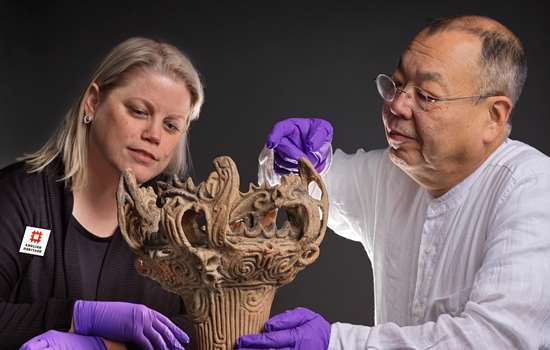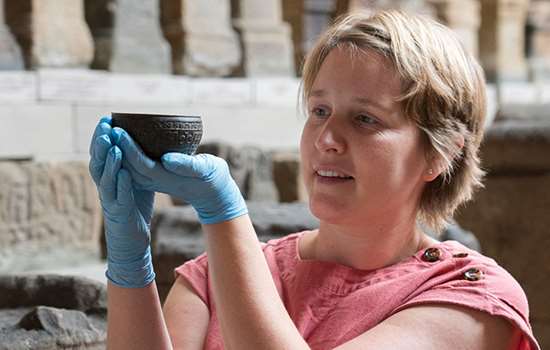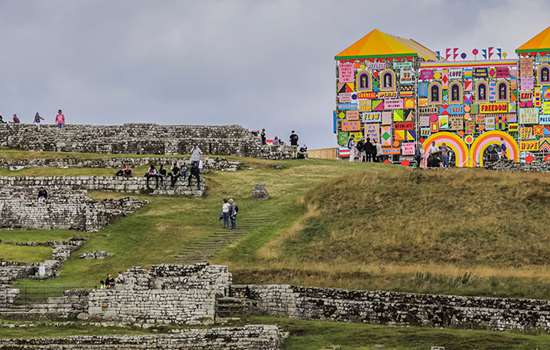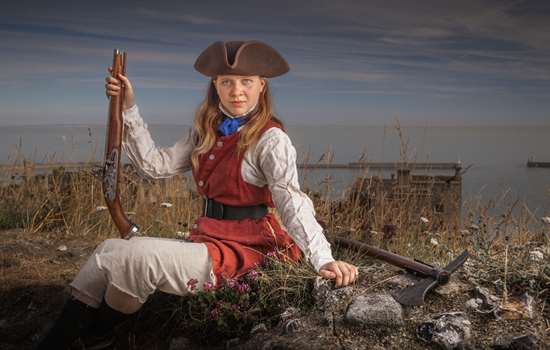19/03/2019
It may be spring, but winter is coming to Hadrian's Wall
English Heritage introduces Watchers on the Wall to highlight how Game of Thrones author George R. R. Martin's ice wall was inspired by Hadrian's Wall
English Heritage's Watchers on the Wall are now on hand at four Roman forts along Hadrian's Wall.
The final chapter of the epic series Game of Thrones begins on 14 April and, from this week, dedicated staff will be available for the duration of the season.
Visitors to Hadrian's Wall can find them at Birdoswald Roman Fort and Corbridge Roman Town in Cumbria and Housesteads Roman Fort and Chesters Roman Fort in Northumberland.
The Watchers will be identifiable by their black cloaks and shields. They will answer visitors' questions about the series and sort the bloody fact from the even bloodier fiction.
Go behind the scenes
So you think you know your Lannister from your Greyjoy, or your Stark from your Targaryen? Or, have you lost the plot on the last seven seasons (spoiler alert: a lot of people died) but are interested in learning about the real historical inspiration behind the gory fantasy? English Heritage has you covered.
Since Game of Thrones first premiered in 2011, staff at English Heritage's Hadrian's Wall sites have been fielding more and more questions from visitors about the similarities between the Roman's northern frontier and the series' giant ice wall. Now these guides will sort the fact from fiction.
Frances McIntosh, English Heritage's Curator of Hadrian's Wall, said:
'As Curator of 'The Wall' and a huge Game of Thrones fan myself, it's hard not to see the many similarities between the fictional fantasy and real life. From the watchers on the wall to the Roman soldier's oath, the wealth of historical events interwoven with the popular show is clear.
'From today, our Watchers on the Wall will be on hand at our sites to answer questions, and in April a new collection of Roman objects uncannily rich with Night's Watch symbolism will be on display at Housesteads Roman Fort.
'Today it may not be supersized like George R. R. Martin's colossal ice wall, but when it was built nearly 2000 years ago, Hadrian's Wall would have been a huge, hulking sign of Roman imperial strength. Standing on the precipice looking north you can tell why Martin was inspired by this ancient monument.'
The 'real wall'
Standing as the north-west frontier of the Roman Empire for nearly 300 years, Hadrian's Wall stretches a vast 73 miles across northern Britain from sea to sea and stands at a height of 4.5 metres.
Designed by Emperor Hadrian to keep out what the Roman's termed barbarians, this mammoth fortification was made up of a myriad of 16 forts, 80 milecastles and 160 turrets. It was manned by thousands of soldiers.
George R. R. Martin's 'The Wall' is a colossal ice wall running along the northern border of the Seven Kingdoms, designed to keep out Wildings and White Walkers and protected by the Night's Watch (a group of men sworn to defend it).
Martin himself has confirmed that the Roman wall was the inspiration behind the series. From the men who swore oaths on Hadrian's Wall, to the symbolism of lions, sea creatures and wolves, the closer you look the more Martin's series becomes a case of art imitating life.
From April, visitors to Hadrian's Wall will also be able to see a new display of objects at Housesteads Roman Fort, including a gaming board, and other items from daily Roman life on the frontier which echo life on the ice wall.
Meanwhile at Corbridge Roman Town, a trail will take you around the museum to spot both the Game of Thrones and Roman symbols in our collection.
Visit Hadrian's Wall and follow our guide.
Find out more about the history and stories of Hadrian's Wall.
Discover the similarities between life for the Roman soldiers on Hadrian’s Wall and the fictional Night’s Watch in Game of Thrones on our blog.
For more from English Heritage, follow us on Facebook, Twitter and Instagram.



